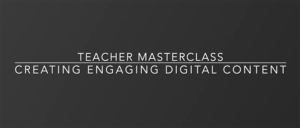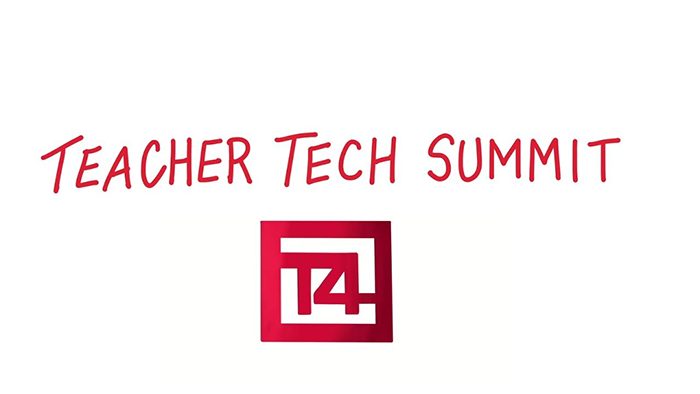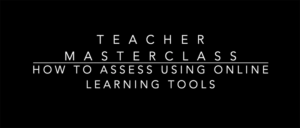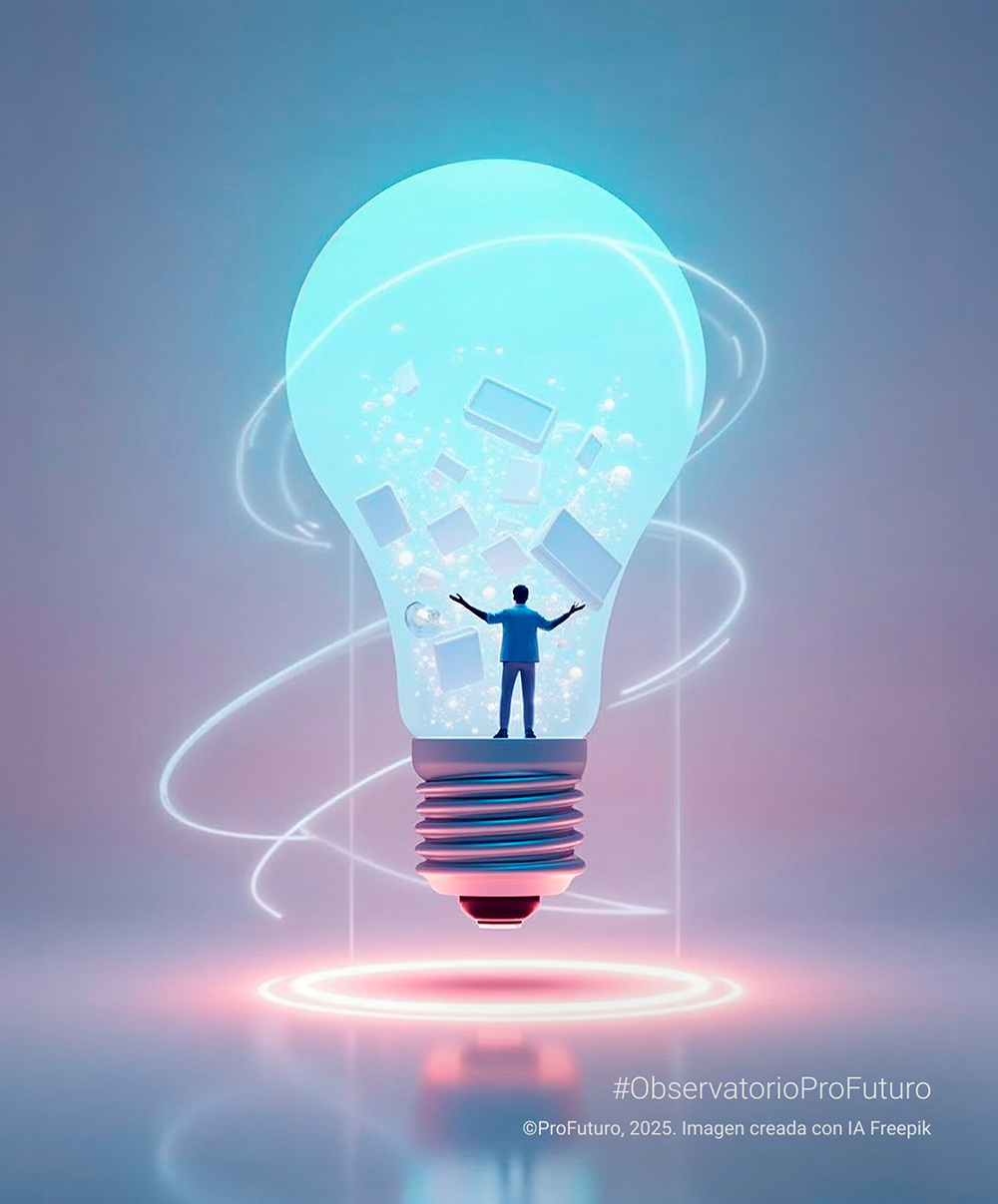Collaborative learning networks for teachers are an excellent tool for motivation and learning. It was in this spirit that the Teacher Tech Summit, came into being in 2021. This is a global event aimed at teachers from around the world, bringing together tens of thousands of educators and technological entrepreneurs, governments and academics to build a shared understanding of the potential of technology in education, accelerate innovation, share best practices and ensure that lessons are learnt from the pandemic.
How can we create motivational digital content? And innovative pedagogies? How can we evaluate by using online learning tools? Is it possible to mix a Spotify playlist with the characters of universal literature? Some teachers showed us how at the last Teacher Tech Summit. The Observatory witnessed their presentations and summarises some of them for you.
How to create digital content that motivates students
 A few (but not so many) years ago, teachers had to leave no stone unturned to attempt to motivate their students and make their lessons a little less boring: Shall we go outside? Shall we visit a museum? Shall we show them a film? What about a play? Today, thanks to the development of new technologies and digital tools, teachers have lots more ways of motivating their students. The creation of digital content such as videos, cartoons and video games is one of the most useful resources for making classes more entertaining and interactive. In this video some teachers share their experiences and tell us how and why.
A few (but not so many) years ago, teachers had to leave no stone unturned to attempt to motivate their students and make their lessons a little less boring: Shall we go outside? Shall we visit a museum? Shall we show them a film? What about a play? Today, thanks to the development of new technologies and digital tools, teachers have lots more ways of motivating their students. The creation of digital content such as videos, cartoons and video games is one of the most useful resources for making classes more entertaining and interactive. In this video some teachers share their experiences and tell us how and why.
When learning equals happiness
Svetlana Belic, a doctor in Education, explains that in order to create motivating digital content that inspires creative thinking, it’s crucial to consider the levels of the challenges to be set and the ability of the students. When the right balance is struck, the students have fun, they like what they’re doing and they’re eager to learn: “Digital content that proposes balanced activities releases the brain’s happy chemicals: dopamine, oxytocin, serotonin and endorphins.
And how is this achieved through digital content?
- It’s vital to create tasks that are intrinsically rewarding. When the students are faced with a challenge that they have the ability to overcome, their brains release dopamine, which, in turn, will increase their motivation and love of learning.
- Teamwork should be encouraged, but the team members should be well-chosen; when the students trust each other, they create healthy relationships that stimulate the release of oxytocin.
- When the students are in control of their own learning, their confidence increases and they’re inspired to investigate and explore different concepts. Learning will become an enjoyable experience. The serotonin will increase and they’ll be left wanting more.
- Inspiring creativity in the classroom through self-assessment and metacognition: the students should be invited to use their imagination to produce evidence of their learning and turn it into formative evaluations. Reflection on their own achievements will cause the endorphins to create positive reactions.
Dr Belic is committed to the customisation of videos by means of the tool offered by TED ED to create content that motivates the students (we show you how it works in this post).
Awakening children’s curiosity through scientific experiments
Norwegian teacher Ulda Beckness, who teaches Maths and Science to early childhood students, has a YouTube channel on which she uses the Nordic ECEC (Early Childhood Education and Care) pedagogy focused on children’s curiosity with regard to seeking answers. In her videos she offers the girls and boys inspiration to explore Maths and Science for themselves.
However, she warns: “watching the videos is just entertainment. The learning begins when the kids do the activities by themselves. With their own hands”. In this regard, she shares some tips:
- The activities should be carried out with available and safe materials and ingredients.
- It’s a good idea to remember that the physical environment sets the mood and the visual digital effects can help to capture their attention.
“When the children do the activities, they learn from their experiences with Maths and Science, and this is really positive, because they acquire healthy attitudes towards the subjects based on their own curiosity and desire to explore”, concludes Ulda.
Creative ways of using videos in the classroom
How can teachers use the videos they create for their students in the classroom? Australian professor Steven Kolber shares some tips on how teachers can get the most out of their videos.
- Partial flipped of the lesson: the students will see part of the lesson at home, usually unquestionable and immutable knowledge (e.g. mathematical or grammatical rules), issues that need to be referred to several times during the course of a lesson, and we leave direct instructions for more novel explanations that we will only see once.
- Rotation stations: in a kind of personalisation of knowledge, we will imagine different tables grouped together around the classroom to which the students are assigned in keeping with different criteria. For example, their degree of skill or knowledge. In this case, the students will watch videos appropriate to their level at each station. The tables can also be arranged sequentially, in such a way that each student has to assimilate the knowledge of one table before moving on to the next one.
- Mixed and flexible delivery model: In this case we combine three things: classroom work, video work and other online skills. It’s flexible in the sense that all these elements can be combined in accordance with the needs of the students at any given time. For example, if the students haven’t seen their work at home and they aren’t ready for the lesson, they can be divided into groups and the teacher can work with each group separately (some receive direct instruction while others watch the videos).
- Full flipped: We’ve already discussed this model on other occasions. The background work is done outside the classroom through videos and the classes are used to discuss what’s been learnt and to examine the content about which we’ve acquired background knowledge that we share with the rest of the class.
Designing effective pedagogies with new technologies
 And, before us, the secret of success. The magic formula that will allow education to capitalise on the new learning technologies. Because we won’t tire of repeating it: it’s pedagogy and technology, not the other way around. When technology becomes a tool at the service of pedagogy, magic enters the classroom. Can you imagine teaching literature through Spotify? Or lots of families around the world learning together by means of a quiz created with Kahoot? The people featuring in this video did. As you know: If you can imagine it… this video will show you.
And, before us, the secret of success. The magic formula that will allow education to capitalise on the new learning technologies. Because we won’t tire of repeating it: it’s pedagogy and technology, not the other way around. When technology becomes a tool at the service of pedagogy, magic enters the classroom. Can you imagine teaching literature through Spotify? Or lots of families around the world learning together by means of a quiz created with Kahoot? The people featuring in this video did. As you know: If you can imagine it… this video will show you.
What if Don Quixote had had Spotify?
Using the interests of her students and the new technologies to develop a new way of getting to know literary works and characters. This is what Brazilian teacher Naiara Chaves de Carvalho, a teacher of Portuguese Language and Literature, did. “I noticed that the students in this class loved music and created lots of Spotify playlists. So I thought: How can I associate my students’ interests with their curricular needs? My goal was to work on their reading and debating skills by using Brazilian literature”, explains Naiara in the video.
The first step involved thinking of a literary challenge to engage the class. The challenge would motivate the students and encourage them to read the chosen novel. So the teacher issued the following challenge. “What if Capitú, Dom Casmurro’s character, had a playlist on Spotify? Which song would he listen to? Create a playlist with at least six songs that dialogue with the character in this book”. This was a challenge that the students had to overcome by reading the classic of Brazilian literature. It would require a range of reading and debating skills, as the above-mentioned playlist entailed the students writing a text to justify their choices.
The next step was to organise groups and create reading guides. “I always like to work in groups, so that they can carry out collaborative activities, think, discuss and create together. The guides should help them in their reading. The teacher can thus mediate so that they focus on important aspects of the reading and information that often goes unnoticed by readers”.
Finally, the students created their playlists, justified and defended them and presented them to the whole class, sharing their songs and discussing key issues of the book upon the basis of the character analysed.
A perfect example of how technology can be placed at the service of pedagogy to innovate in education.
Creating a global learning community with Kahoot
During the pandemic, Steve Auslander’s passion for connecting children from different parts of the world helped him to devise a game that began as a way for the children in his class to remain in contact, but it ultimately became a global learning community made up of families from the five continents. He did so through Kahoot, a wonderful tool for gamifying learning that can create questionnaires for the organisation of quizzes in which the students can measure their knowledge.
Steve created Family Kahoot Friday so that the families from his school could play against each other. It soon “got out of hand” and participants from all over the world arrived. “We started making it thematic, inviting other teachers to take part as panellists; it’s a great way of highlighting everything the students are doing and showing them that what they’re learning is relevant.
How to evaluate by using online learning tools
Nowadays we also know that student evaluation goes far beyond the realisation of a one-off test or exam at a specific moment in time (e.g. at the end of a term or academic year), during which the student has to “dump” a huge amount of memorised content on paper. Today, once again aided by technology, educational systems are beginning to embrace much more flexible and ongoing ways of evaluating students. This is the so-called formative evaluation, which, according to the OECD, “consists of evaluating the student’s progress and knowledge in a frequent and interactive manner”. Teachers can thus adjust their programmes to meet their educational needs much better. How have teachers integrated this type of evaluation into their pedagogical practices? How have they used the new technologies to do so? Some teachers tell us how they’ve done it in this video.
Evaluation through play
Esther Omonigho Airemionkhale, a teacher specialising in EdTech and a YouTuber, explains the two things she regards as key when it comes to evaluating:
- Understanding the purpose of the evaluation is essential. You need to know what you’re going to evaluate and then you can decide which approaches to use.
- Once you identify your evaluation goals and approaches, the best way of evaluating a student is through play. Let them enjoy the process and you’ll be surprised by how much they can learn, even through the evaluations.
This Nigerian teacher uses Kahoot and Canva to create games and evaluate her language learners.
Fortnite and Minecraft for evaluations
Alberto and Mario are the E-Twinz, two Spanish twins who teach in Utah and, one day, came up with the idea of using video games to evaluate their online students. In the video they explain the three basic steps, according to their experience, for designing an evaluation experience using video games.
- Design a heading: we have to design a heading to establish expectations.
- Choose the video game: They use a non-violent and “constructive” version of Fortnite and Minecraft.
- Student plan: The students need to follow a plan, a schedule. So they must be given a timeline with different control points, through which the teacher will check that the students are on the right track and that they’re doing what they’re supposed to do.
Having teachers capable of structuring and implementing pedagogical practices supported by the digital technologies in an innovative and motivating way is one of the cornerstones of the digital transformation of education. Peer learning is one of the most effective forms of teacher training. The strength of a global teaching community supported by governments, organisations and the academic world will change education and take it into the future.







